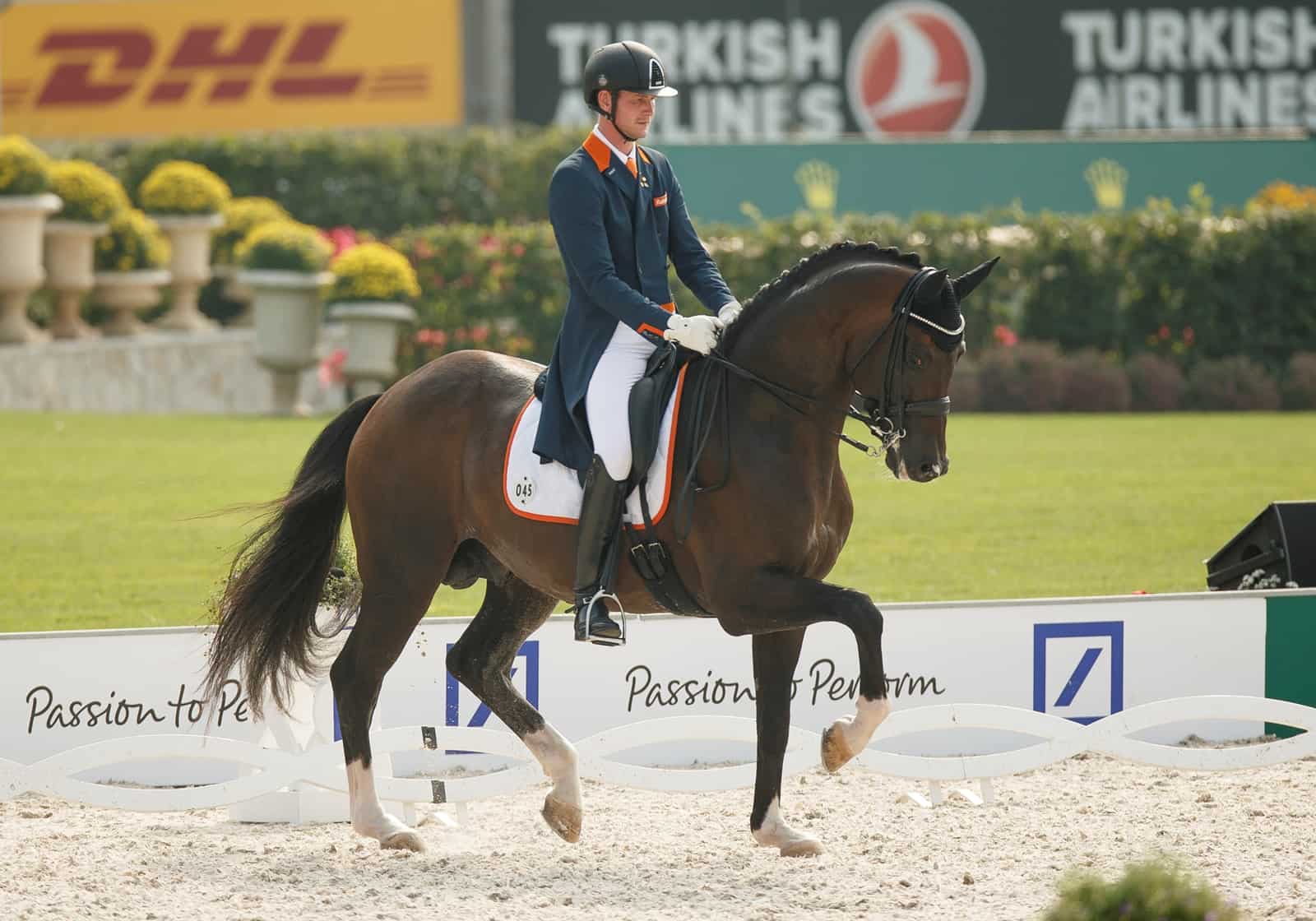Researchers Study the Biomechanics of Passage

The passage is a complex movement that few dressage horses attain. But why is it so hard for them to learn and so difficult for trainers to teach? And what are the effects of the passage on the horse’s body? Until recently, those questions have been difficult or impossible to answer. Thanks to modern technology, however, researchers are now able to dissect the biomechanics of the passage and unravel some of its mysteries.
“When we understand the biomechanics of dressage, it becomes easier to see why some horses have trouble learning specific movements, and it makes us better equipped to figure out exercises to train and condition appropriately,” said Hilary M. Clayton, BVMS, PhD, Dipl. ACVSMR, MRCVS, professor and McPhail Dressage Chair Emerita at Michigan State University, in East Lansing. “An understanding of biomechanics also indicates which anatomical structures are being loaded as the horse performs specific movements, which helps to predict injury risk, and this can be applied in developing conditioning and rehabilitation programs.”
Clayton and Sarah Jane Hobbs, PhD, of the University of Central Lancashire Centre for Applied Sport and Exercise Sciences, in the U.K., recently investigated biomechanical variables involved in passage. To do so, they studied the passage movements of three highly trained dressage horses as their riders took them over four force platforms. The scientists placed reflective markers on the horses and performed simultaneous motion capture analysis using 10 infrared cameras. Altogether, they explored 20 passage steps with fine technological detail
Create a free account with TheHorse.com to view this content.
TheHorse.com is home to thousands of free articles about horse health care. In order to access some of our exclusive free content, you must be signed into TheHorse.com.
Start your free account today!
Already have an account?
and continue reading.

Written by:
Christa Lesté-Lasserre, MA
Related Articles
Stay on top of the most recent Horse Health news with















